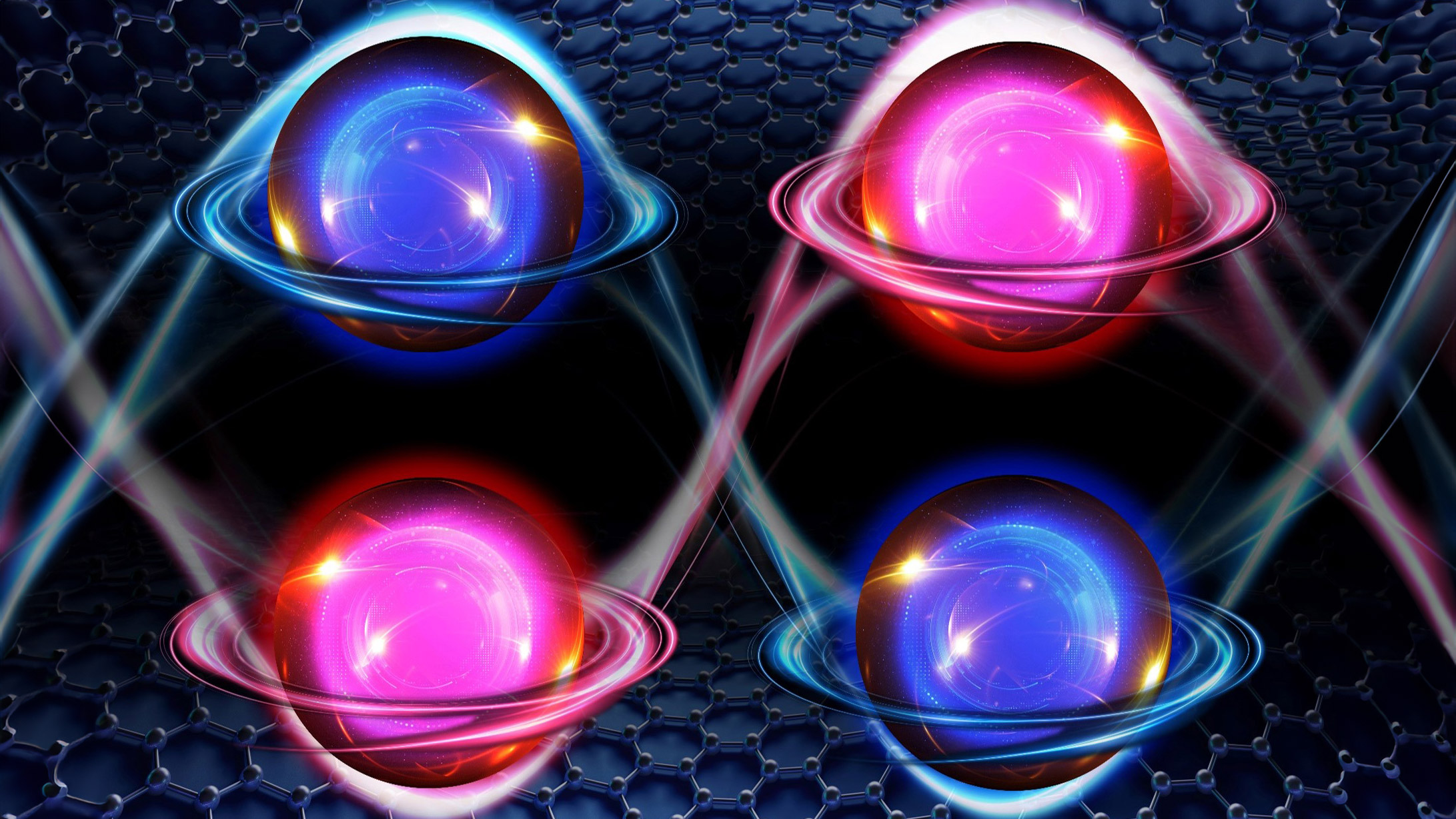A five-layer graphene surprise
Unusual electronic behavior in a specific form of the material could help pack more data into magnetic memory devices.

Graphene, a form of carbon consisting of a single layer of atoms linked in a hexagonal lattice, is a material with many unusual electronic behaviors. Now MIT physicists have discovered another: when stacked in five layers offset so that the atoms form a specific three-dimensional pattern, graphene becomes “multiferroic,” a rare state in which coordinated behavior is seen in more than one of a material’s electric, magnetic, or structural properties.
A magnet is a common example of a ferroic material: its electrons can coordinate to spin in the same direction. But this form of graphene exhibits both unconventional magnetism—its electrons coordinate their orbital motion as opposed to their spin—and an exotic type of electronic behavior involving a preference for one of two “valleys,” the lowest energy state an electron can naturally settle in.
“We don’t see this property in one, two, three, or four layers,” says team leader Long Ju, an assistant professor of physics at MIT. But “in five layers, electrons happen to be in a lattice environment where they move very slowly, so they can interact with other electrons effectively,” he says. To get samples with the right configuration, the researchers started with a small block of graphite, from which they carefully peeled individual flakes of graphene. They used optical techniques to examine each one, looking specifically for five-layer flakes arranged naturally in a rhombohedral pattern.
The discovery could help engineers design ultra-low-power, high-capacity data storage devices for classical and quantum computers.
“Having multiferroic properties in one material means that if it could save energy and time to write a magnetic hard drive, you could also store double the amount of information compared to conventional devices,” Ju says.
Keep Reading
Most Popular
10 Breakthrough Technologies 2024
Every year, we look for promising technologies poised to have a real impact on the world. Here are the advances that we think matter most right now.
Google DeepMind used a large language model to solve an unsolved math problem
They had to throw away most of what it produced but there was gold among the garbage.
The worst technology failures of 2023
The Titan submersible, lab-grown chicken, and GM’s wayward Cruise robotaxis made our annual list of the worst in tech.
AI for everything: 10 Breakthrough Technologies 2024
Generative AI tools like ChatGPT reached mass adoption in record time, and reset the course of an entire industry.
Stay connected
Get the latest updates from
MIT Technology Review
Discover special offers, top stories, upcoming events, and more.